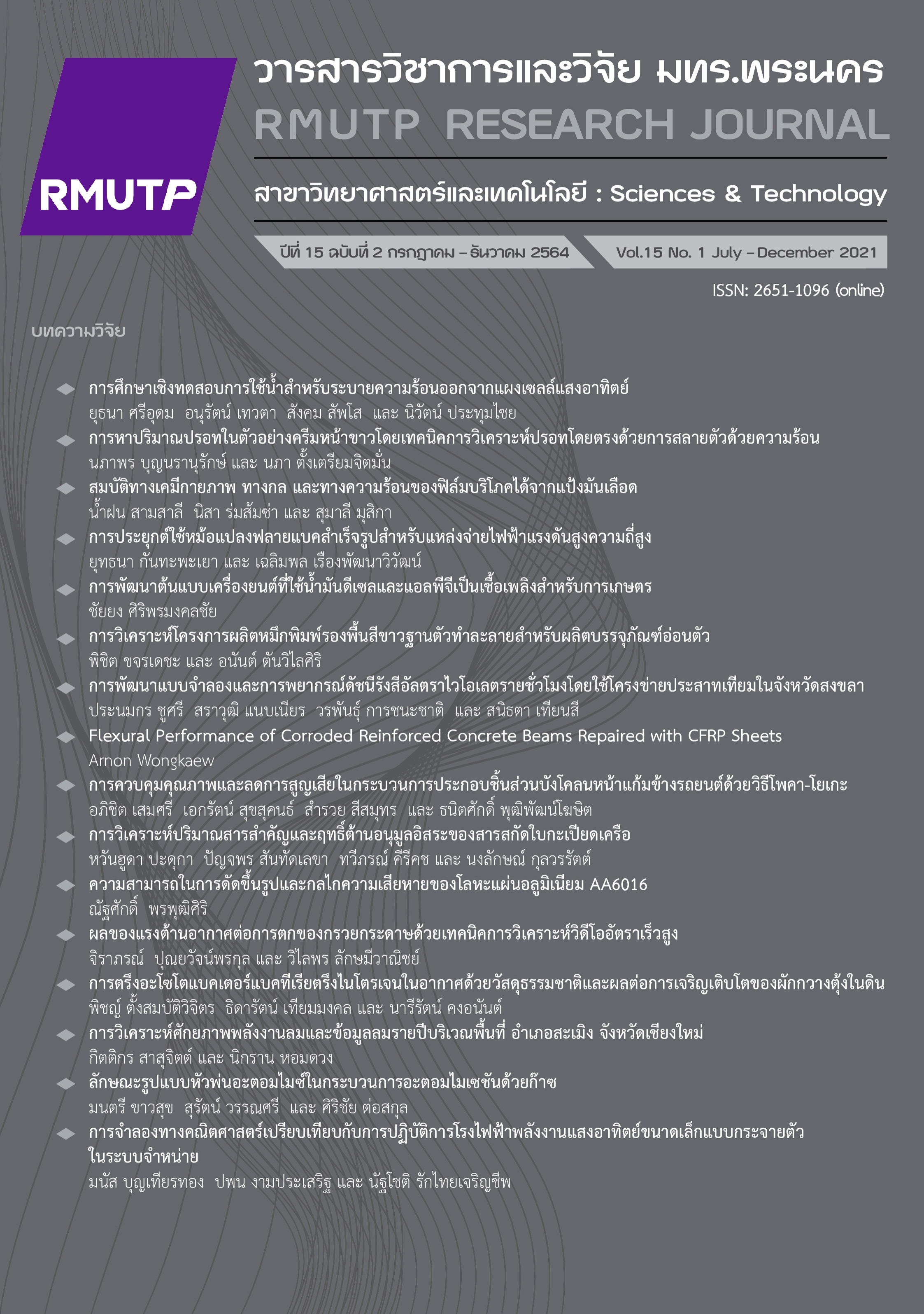The Feasibility Study for Solvent Based White Ink for Flexible Packaging
Main Article Content
Abstract
The research proposes to find an optimum ratio of solvent based white ink for flexible package development by studying and comparing the qualification of white ink on plastic film. The process consists of separating the white ink ratio into 5 sampling group ratios and then examining ink quality by its’ solid content and grinding. The viscosity is controlled in 16 second and then measured by Zahn’s cup no. 3. The sampling ink is printed and inspected printing quality by (1) DE*ab and opacity on polyethylene terephthalate (PET) plastic film and oriented polypropylene (OPP) and (2) bond strength by extrusion. The result shows that sampling ink with hardener substances and ink and varnish ratio is at 90:10 certifies in all aspects compare with other sample. Indicators are the net present value (NPV), Benefit/Cost Ratio: B/C Ratio, Pay Back Period and internal rate of return of investment (IRR). The Feasibility Study found that the projects are the net present value (NPV) of 5,053,593 baht, payback period of 1 year 8 month and rate of return on investment (IRR) was 54.79 %. B/C ratio = 1.25
Article Details

This work is licensed under a Creative Commons Attribution-NonCommercial-NoDerivatives 4.0 International License.
ลิขสิทธ์ ของมหาวิทยาลัยเทคโนโลยีราชมงคลพระนครReferences
T. Srithongterm (2019, June 8) Plastic packaging industry. [Online]. Available: https://www.lhbank.co.th/
A. Hansuebsia, Advances in printing technology, 1st ed. Bangkok. Chulalongkorn University Press, 1999.
M. Paklamjeak, CONSUMER PACKAGING, 1st ed. Bangkok. E Hing Printing Press, 2013.
P. Amornpinit, Recess screen and non-impact printing processes, 1st ed. Nonthaburi. University Press Sukhothai Thammathirat Open University ,1994 pp. 22.
D. Khamraksa and A. Themmathurapoj, “Studying about a Payback Period of Using the Automatic Offset Printing Ink Pumps Instead of the Traditional Offset Printing Ink Cans,” Project, Dept. Printing Tech., King Mongkut’s Univ Thonburi, Bangkok, Thailand, 2011.
W. Janjomsuke, “Modification of a single-solvent-based gravure ink for enhance wettability and substrate adhesion,” Thesis. Rochester Institute of Technology, New York, USA , 2005.
T. Ongwong and P. Lhongsomboon, “Mixing of Gravure Printing Ink to Improve Color Matching between Proof and Actual Print,” Project, Dept. Printing Tech., King Mongkut’s Univ Thonburi., Bangkok, Thailand, 2008.
T. Nantarat and C. Papusson, “Economic Feasibility Evaluation of Government Investment Project by Using Cost Benefit Analysis: A Case Study of Domestic Port Port A),” in Procedia Economics and Finance Laem- Chabang Port, Chonburi Province, 2012, pp. 307-314.
C. Piputsitee, Economics of project analysis, 3st ed . Bangkok. Office of Promotion and Training Kasetsart University, 1997
C. Chantaro and S. Thongprasert, Engineering Statistics, 1st ed. Bangkok. Chulalongkorn University Press, 1993.
A. E. Boardman, D.H. Greenberg, A. R. Vining and D. L. Weimer, Cost-Benefit analysis: Concepts and practice (2nd ed.). UpperSaddle River, NJ: Prentice-Hall., 2001.
R. Xu, A. Pekarovicova, P. D. Fleming, Y. J. Wu and M. X. Wang, “A method for evaluating ink mileage in gravure printing,” Tappi Journal, vol. 6, no. 12, pp. 27-32, Dec. 2007.


